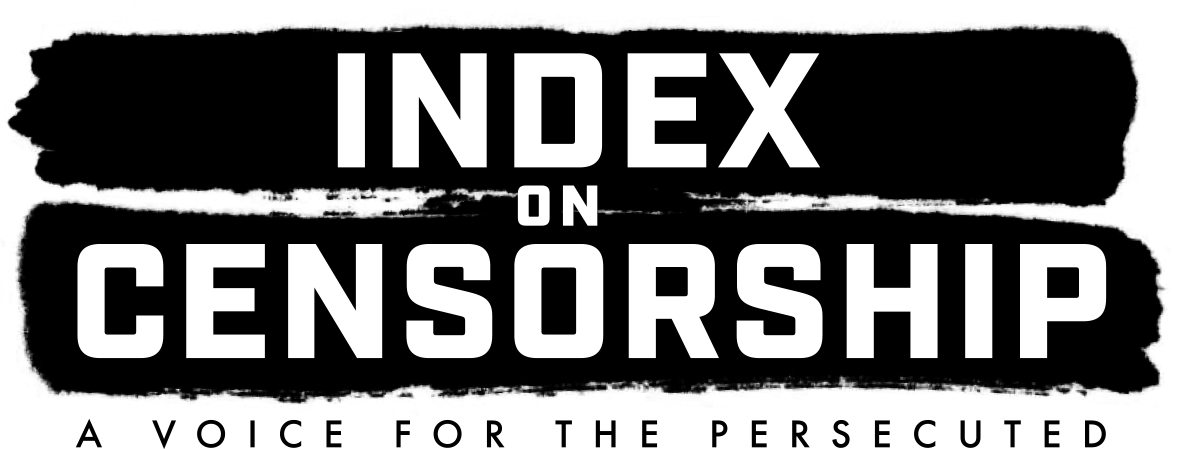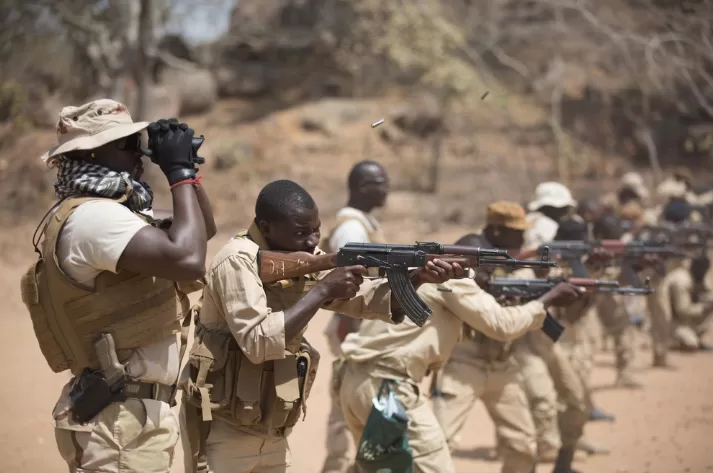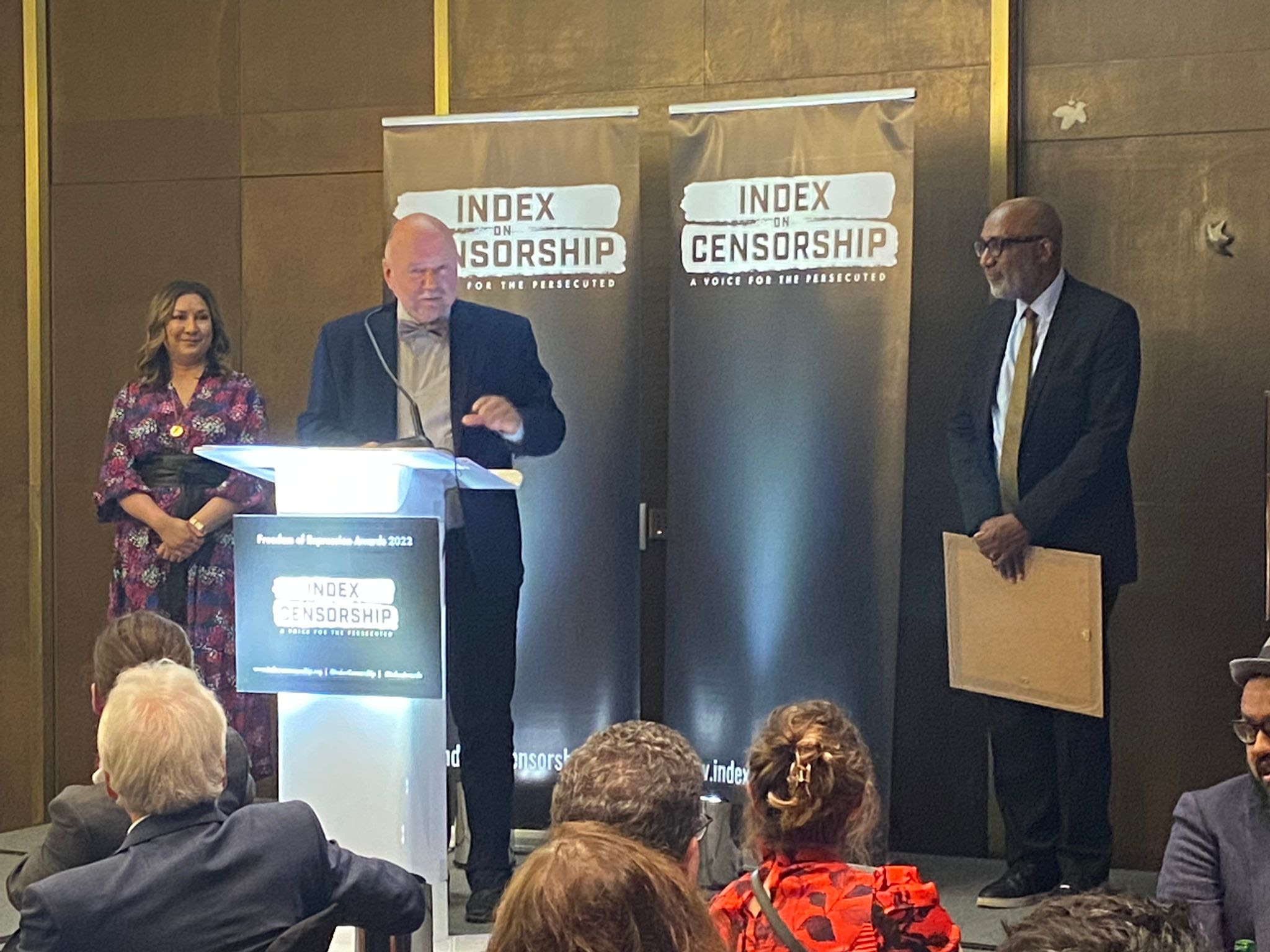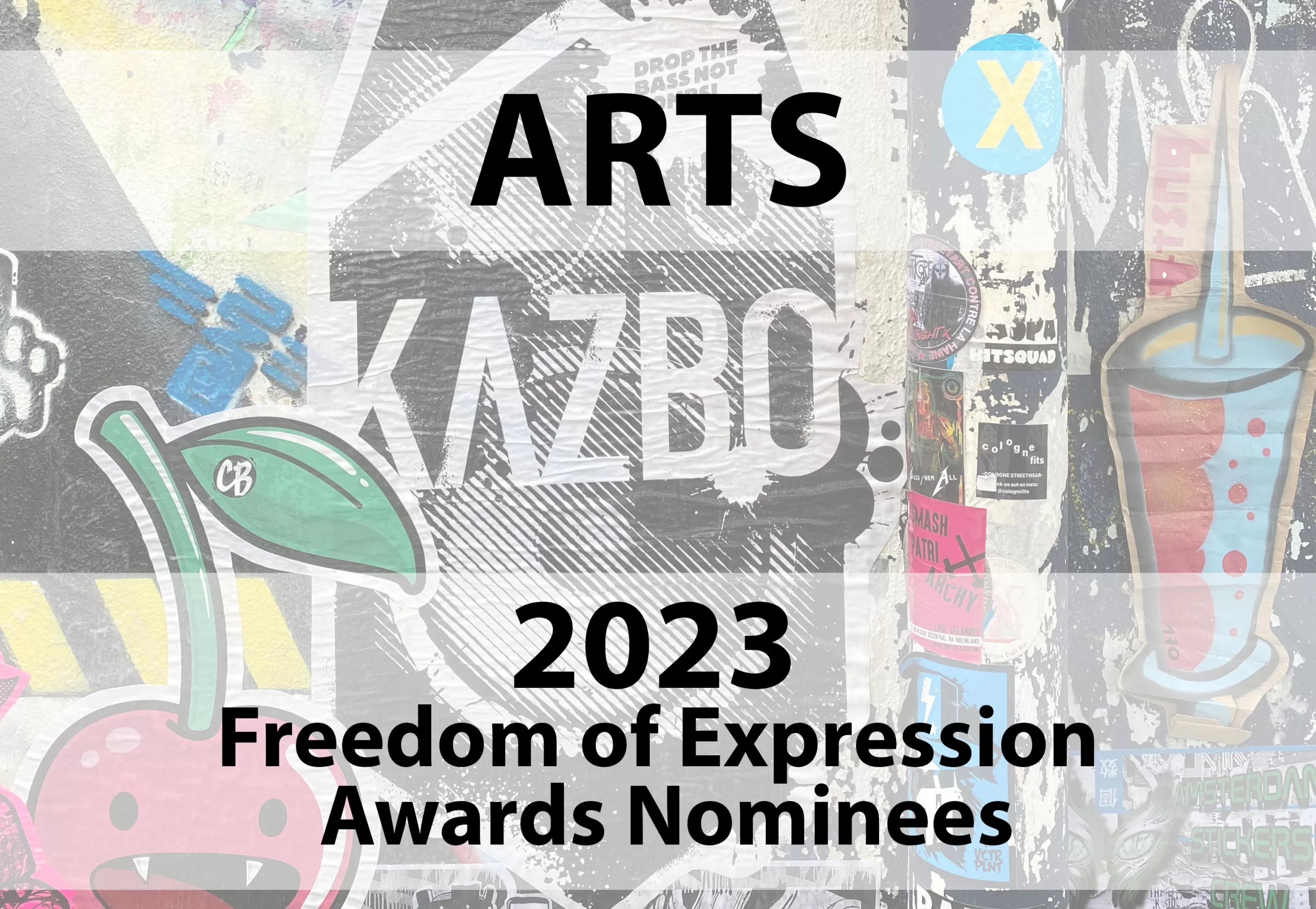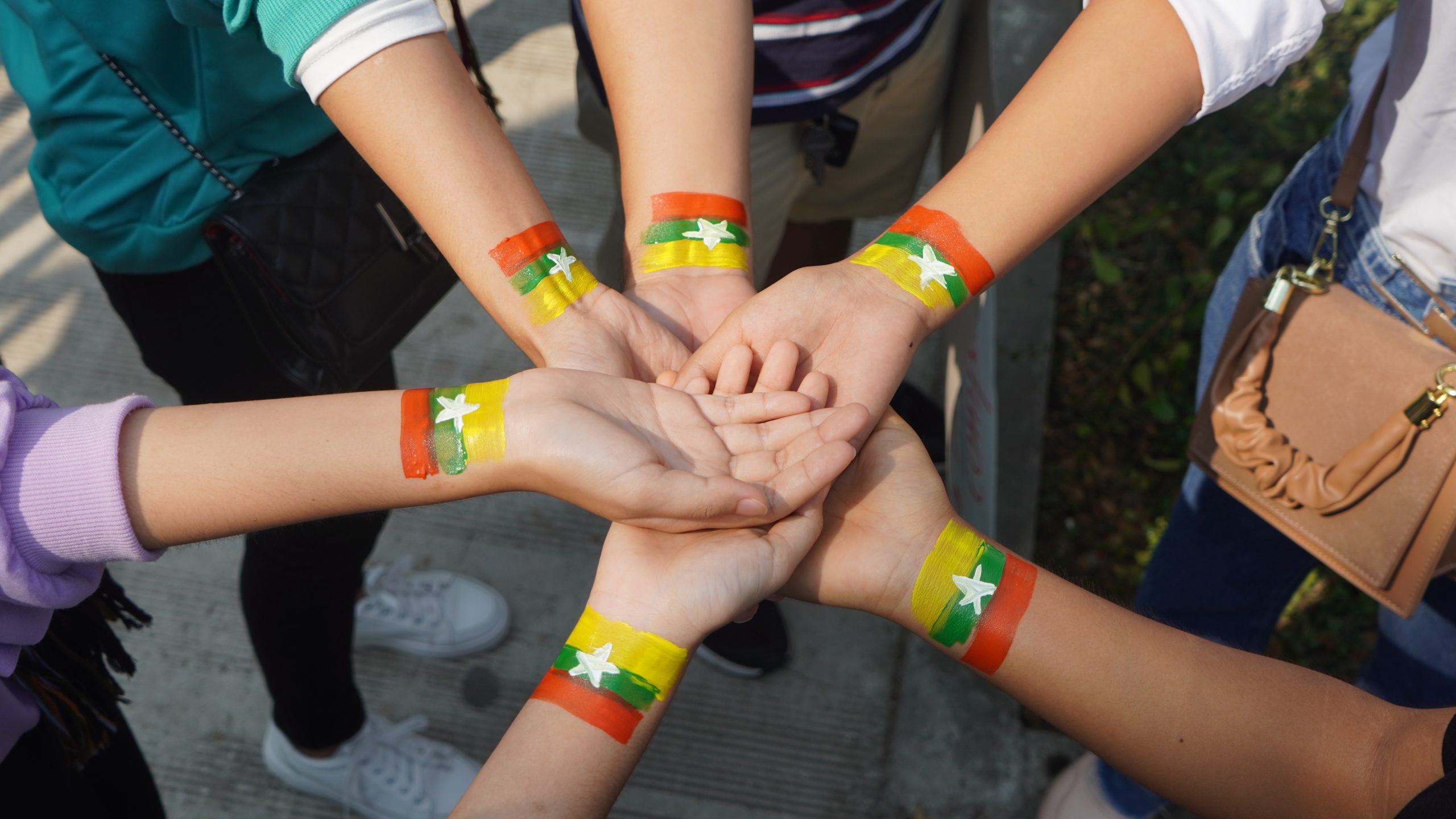“In the past political art was very easy – ‘this government is bullshit’ – but now due to the transition period and role of Aung San Suu Kyi in government it’s more complex, people are wary of making sweeping statements.”[21]
The abolition of pre-censorship in the print media has created a more widespread relaxation of pre-censorship including for other artistic forms. Artists were clear that the situation had improved significantly since the beginning of the transition, in particular there was more freedom to criticise the military and the USDP. One clear indicator of the greater openness was demonstrated by The Art of Transition symposium co-produced by Zarganar’s company HOME (House of Media and Entertainment) and Index. The symposium, which was a licensed event, was the first cross art form debate about artistic freedom of expression in the country.
The new openness is in contrast to the legal framework which continues to be highly restrictive. Exhibitions, performances and all non-print expression have to be licensed and are subject to pre-censorship by the authorities prior to the granting of a license for their public display. Section 505 of the penal code and section 18 of the law on Peaceful Assembly and Peaceful Procession are used to control public performances (see Freedom of assembly, above). Broad and arbitrary application of the law makes it difficult for artists to know if their art will lead them to be prosecuted. The continued presence of police and informers at artistic events has the potential to chill free expression, although many Burmese artists seem relaxed about their presence as the space for cultural expression opens up.
Even with the transition, a number of subjects are still off limit and social taboos persist particularly around religion and art. Culture considered to “Westernise” Burma (the bar on Western culture began in 1962) such as horror, sexually explicit content and nudity will be censored. One artist noted that the art community was aware of the parallels between this transition and the end of the Suharto period in Indonesia where the government continued to clamp down on cultural taboos using a propaganda slogan: “Free but polite”.
Literature
Pre-publication censorship of literature has been suspended in stages; first children’s books were no longer subjected, finally political literature was allowed prior to the total abolition of the censorship board in August 2012. In the past, the Central Registration Board for Printer and Publishers would ask for up to 60 copies of books to be kept as part of the publication authorisation process. Now, the authorities ask for 12 copies to be submitted post-publication, for legal deposit libraries. Significant uncertainty about the legal framework persists and publishers fear post-publication pulping of their books, or a legal case (in particular criminal defamation), even though there have been no high profile cases against publishers.
The tradition of literary talks, long suppressed under SLORC period, made a return after the Saffron Revolution. Before the transition, literature tours of towns and villages were an important source of information, with writers masking the discussion of politics by appearing to discuss Western texts with clear similes. Leading cultural figures have used the transition as an opportunity to tour villages to speak about freedom of expression and political subjects such as press freedom, the rule of law and environmental damage. Burma hosted its first international literature festival (February 2013) in Yangon with writers including Jung Chang whose novel Wild Swans has just been published in Burma. It remains banned in China. Significantly, exiled 88 generation writers including Pascal Khoo Thwe and Khoo Thwe returned to Burma for the festival. Criticism was made of the entry fee, which exceeded the average daily wage excluding many possible participants.
Comedy
There is no doubt among artists that the authorities fear public performance more than art installations, in particular public performances of comedy and poetry, due to their ability to influence a greater number of people and their importance in Burmese tradition. Traditional Burmese forms of storytelling and satirical / comic performance such as Than Gyat and Anyeint, once banned, have made a comeback.[22] The bar on Than Gyat, imposed by the government, was lifted in 2012.[23] Zarganar, one of the country’s foremost comedians, has begun testing the limits of free expression during the transition. During a six hour marathon Anyeint comedy show broadcast live on Sky Net (a new pay per view TV channel),[24] Zarganar pushed the boundaries with satirical skits on Aung San Suu Kyi, President Thein Sein, corruption and an unambiguous chant mocking new freedoms translated as “we are free to do anything now – sell our shit, piss on the streets”.
Visual art
The pre-censorship of visual art remains in place through the use of bureaucratic hurdles that it is a requirement to meet in order to display visual art in a public place. All exhibitions must be approved by the Ministry of Information and the local township authority, prior to its public display. It can take up to 2 months to apply for a permit from the local authorities. This bureaucratic hurdle limits the commercial opportunities for artists, but also makes it difficult for artists to respond to political or cultural situations as they arise. Police informers continue to visit art galleries and it is believed that the blacklist of artists created by the Ministry of Information, formally out of use since 2009 still applies in the granting of permits for public exhibitions of art.[25]
The decisions reached by government officials are often arbitrary. One artist’s sculpture of a dead body was refused a permit for display in 2010 because the authorities said there “was too much black.” Art that crosses the line between criticism of the government and what is deemed to be gratuitously offensive continues to be censored. Impressionist or abstract interpretations of partial nudity will now normally be approved by local authorities for exhibition, but the clear depiction of sexual organs will not. Artists self-censored criticism of Buddhism or Buddhist symbols, in part due to the belief that such art would not be licensed for public display, but also out of fear of reprisals by members of the public.
Though boundaries remain, in Yangon many private art galleries have decided to view the transition as a period in which to test boundaries and have decided not to apply for a permit to display art due to the length of this process. There is also an increasing space for political art. Artist Nyo Win Maung remade Rodin’s “Thinker” – without a brain – using state newspapers to signal the regime’s lack of intelligence. The piece was approved for public display. A significant amount of art has been displayed in galleries in Yangon that directly criticises President Thein Sein.[26]
Performance art
The limitations on public visual performance art were considered the greatest restriction on artistic freedom of expression by artists in Mandalay.[27] Though these art forms, often highly politicised, could in certain cases get past the censors because the artistic language and imagery was sufficiently obscure in most instances the police continue to view public performance art as a challenge to public order. In Yangon, artists believed obtaining permission for public performance art was easier than elsewhere in the country, but the Beyond Pressure festival faced obstacles obtaining the necessary permits for public performances in December 2012. In Mandalay the limitation on public performance was identified as the top restriction on artistic freedom of expression.[28] One Mandalay artist, Suu Myint Thein, was detained after a street performance on World Peace Day 2012 after police claimed he “frightened many people” and blocked the traffic.
Music
The transition has led to the suspension of the pre-publication censorship of music improving freedom of expression for musicians and performers. However, the use of force to break up live music and curtail freedom of expression has been replaced by bureaucratic obstacles as demonstrated in the case study on applying for a live music permit (see below).
The Myanmar Music Association is now nominally independent but it maintains a close working relationship with the government. Producers must file copies of new music with the Association on behalf of the Ministry of Information and musicians fear that anything controversial will be handed over to the authorities who may sue the artist for defamation.[29]
Beyond politics, not all genres of music attract the same level of attention from the authorities: US style hip-hop has been perceived as a threat by the authorities for some time. In 2007, rapper G-Tone was dragged from the stage of an illegal gig after displaying his tattoo of prayer beads, seen as a symbol of support for the monks. Musicians still considered hip-hop, punk and heavy metal as more likely to be refused permission for a licence to perform than pop music, or traditional Burmese music.
Case study: obtaining approval for a live music permit
To apply for a live music permit permission is needed from every level of government: from the urban ward authority (or village tract), the smallest division of government; once this is obtained the applicant needs 2 papers of approval from the township in which the musician or band intends to play and also national approval from the Myanmar Music Association. Once these 3 approvals have been obtained, permission must be sought from the township authorities and the township police station followed by permission at district level then from the divisional or state authority (for instance, Yangon division). At divisional level, the Mayor of the division must sign off on the event personally. If any of these authorities refuse the permit, even on a technicality or minor mistake on the form, the process must begin again. The process is unable to handle a large number of applications for cultural permits so is invariably slow. There is no reason why a single level of government should not be responsible for live music permits. Musicians told Index the complexity of the process was devised to stop live music performances and was a form of “bureaucratic censorship”.[30] One musician had spent 8 weeks applying for a permit with over a dozen visits to police stations and municipal offices.[31] Musicians try to remain on good personal terms with the authorities and bribery is still used to ensure edgy work is allowed a permit – anecdotally this seems to be in decline as the rules are relaxed. Whereas once the police asked directly for bribes, now they ask for money for repairs, one applicant was told by the police: “We really need money to fix our office, we’d be very grateful.”[32]
Film
Burma’s Television and Video Act 1996 requires all videos, except family recordings, to be viewed by the Motion Picture Censor Board for films or, for locally produced or imported video footage, the Video Censor Board. Failure to comply may result in fines, imprisonment of up to three years and the confiscation of property. The Video Censor Board consists of two representatives of government organisation, the Myanmar Motion Pictures Enterprise, a number of Ministry representatives and “suitable citizens”.
In early December 2011, the Minister of Information and Culture Kyaw Hsan was reported to have announced that the censorship regime for the press and motion pictures would be relaxed.[33] This has taken place across most genres, though sex and nudity are still mostly off limits, and horror is the genre which is most affected with whole-film bans. Political films that were previously banned or restricted in Burma are now being shown – for example, “Burma VJ”, and “Click in Fear” – both showed startling footage of brutal military attacks on protesting monks during the Jasmine Revolution. The latter film was even projected onto the front of the modern Taw Win shopping plaza in Yangon. The Art of Freedom Film Festival in January 2012 publicly challenged the film censors by showing uncensored films in Burma for the first time. In June 2013, Min Thin Ko Ko Gyi’s Human Rights and Human Dignity Film Festival pushed the boundaries of artistic expression by showing international films on human rights issues for the first time in the country.
NEXT SECTION: Digital freedom of expression
Burma: Freedom of expression in transition: Introduction | Politics and society | Media freedom | Artistic freedom of expression | Digital freedom of expression | Conclusion | Full report in PDF format
[21] Interview with artist (Yangon, 15 March 2013).
[22] Than Gyat, revolves around the Burmese New Year and teams of performers compete for cash prizes to satirise mistakes made during the previous year (to, it is said, avoid them in the coming year).
[23] Discussion in Yangon with Index, 29 March 2013.
[24] The show took place in Yangon on 27 March 2013 and was watched by Index live. It is alleged that President Thein Sein watched the show on television.
[25] Art practitioner (Yangon, 16 March 2013).
[26] Index viewed some of this art at a gallery in Yangon and at an exhibition, “The Resource Curse” in Mandalay.
[27] Interview with artists (Mandalay, 12 March 2013); interview with artist (Yangon, 14 March 2013).
[28] Symposium of artists (Mandalay, 12 March 2013).
[29] Interview with musician (Yangon, 15 March 2013).
[30] Interview with a band (Yangon, 14 March 2013).
[31] Interview with a musician (Yangon, 15 March 2013).
[32] Interview with an artist (Yangon, 15 March 2013).
[33] A number of sources:
Xinhua, ‘Myanmar drafts amendment of print media, TV laws’ (11 December 2011),
http://news.xinhuanet.com/english/world/2011-12/11/c_131299750.htm accessed on 10 July 2013; Zin Linn, Asian Correspondent, ‘Opinion: Burma must relax censorship laws’ (12 December 2011),
http://asiancorrespondent.com/71808/burma-needs-more-to-relax-censorship-laws-on-the-media/ accessed on 10 July 2013.
